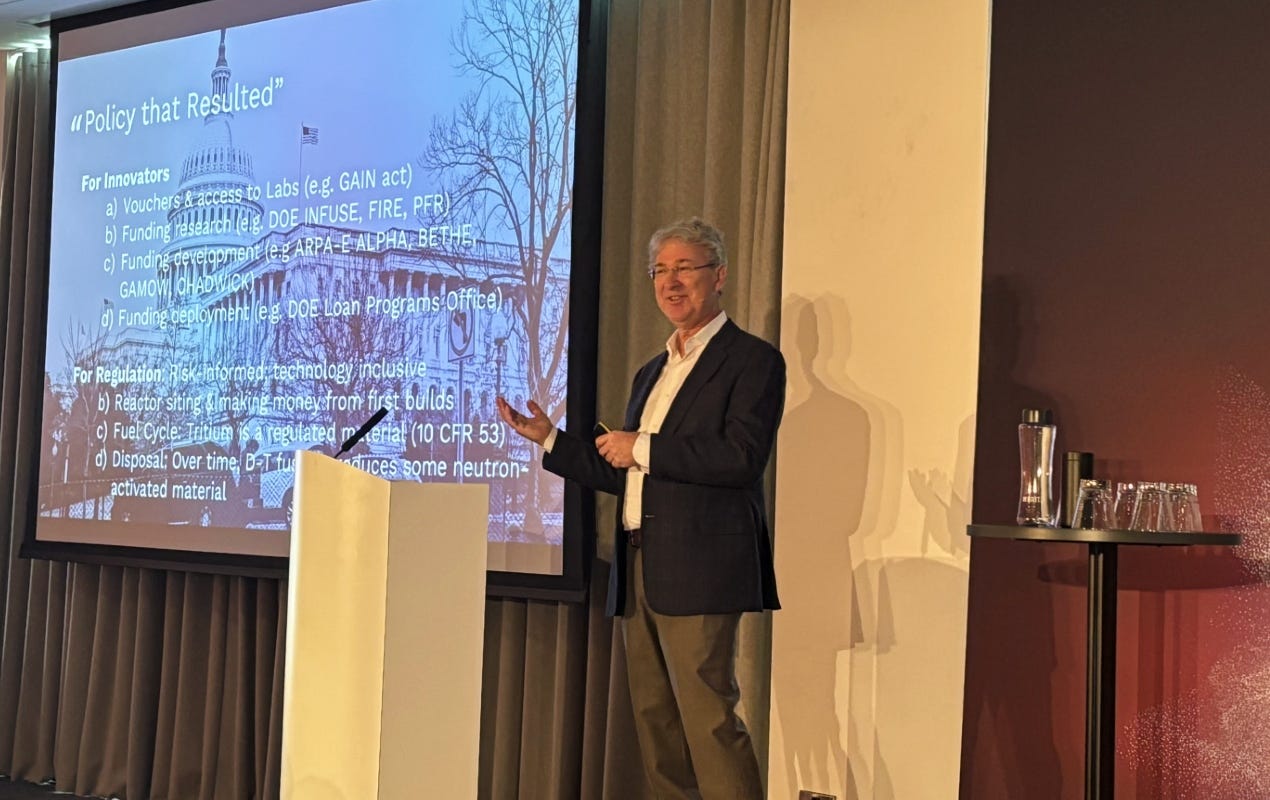Google’s Bold Bet on Fusion Energy
A New Dawn for Fusion: Why Google Thinks the Race to Harness the Sun’s Power Is Finally Nearing a Historic Breakthrough

Fusion energy, long considered the ultimate prize of clean power, is moving closer to reality — and Google is making sure it’s part of that future. At a critical moment for global energy transition, the tech giant is leveraging its strengths in machine learning and advanced R&D to accelerate fusion development.
“We see things happening that are taking us towards these points where we can say, yes, fusion is not just likely, but going to happen,” said Ross Koningstein, director emeritus and founder of Google’s advanced nuclear energy R&D (NERD) group. "This is not science fiction anymore — it’s engineering."
Google's quiet but strategic push into nuclear fusion has helped companies improve plasma control, optimise reactor performance, and refine complex simulations for over a decade. These technical advances and billions of dollars of private and public funding are moving fusion from laboratory curiosity to commercial prospect.
Still, Koningstein offered a cautionary note: “Identifying which of those companies can go from having fusion energy out to being economically successful is particularly not knowable today.”
Instead of backing one solution, Google advocates supporting multiple approaches — what Koningstein calls a “horse race” rather than “picking favourites” too soon.
Fusion Fest Spotlight
During a lively discussion at Fusion Fest, organized by The Economist in London, Koningstein laid out Google's journey and vision for fusion’s future. His session, complete with slides, humour, and a Yoda reference — "Do or do not. There is no try" — offered a rare inside look at Google's energy moonshot.
Reflecting on Google's early fusion experiments, Koningstein recounted, “You can't just stick your finger into a plasma to measure it — you'd wreck your finger and wreck the plasma.”
Instead, Google's team used Bayesian modelling, sensors, and machine learning to map plasma behaviour frame-by-frame, helping partners refine their machines without physical intrusion.
Their first collaboration was with TAE Technologies, where Google helped optimise complex plasma parameters. Later, Google DeepMind contributed AI systems that could dynamically adjust the shape of plasma fields in tokamaks — a leap toward stable, controlled reactions.
Koningstein emphasised that fusion demands agility and resilience: “When you're in a company, you're always faced with the urgent—fundraising, roadblocks—but you can't lose sight of the important. At some point, the important has to become urgent.”
The environment for fusion startups also evolved thanks to deliberate policy work. Koningstein credited early bipartisan, or more accurately, "non-partisan" support within the U.S. government for today's momentum.
“Different political parties supported nuclear innovation for their own reasons,” he said, noting that energy security, cost certainty, and national leadership drove interest beyond environmental concerns.
"If you're not a climate hawk but a defence hawk, you still care about being a leader in nuclear regulation," he explained.
Backing Fusion’s Rising Stars
Google’s investments in two companies, TAE Technologies and Commonwealth Fusion Systems (CFS), reflect its belief in multiple paths to fusion.
TAE, founded in 1998, pursues a unique plasma confinement method designed to minimise radioactive waste. Meanwhile, CFS, a spinout from MIT, focuses on compact, high-field tokamaks capable of achieving net positive energy output, starting with their SPARC project.
Koningstein said these were Google's first fusion investments, but "they do not represent the total set of things that Google will look at."
Asked when Google might power a data centre with fusion energy, Koningstein smiled. “I don’t have that crystal ball,” he said. "Achieving actual energy-out conditions? Plus 10 to 15 years."
While that timeline may seem distant, the recent acceleration is undeniable. Companies are approaching a milestone where they will be confident enough to feed real fuel into machines.
“That’s a major watershed,” he said. “It’s going to inspire a ton of people to say, the fusion era is so close, you can taste it.”
Fusion’s Bigger Picture
Beyond technical hurdles, Koningstein acknowledged the importance of public trust and geopolitical dynamics.
“You can't really predict how people will think,” he said, but emphasised that fusion enjoys a more positive public perception than fission energy. “When discussing fusion, people have a much more optimistic mindset.”
Yet competition between nations could complicate progress.
“If there’s some form of ‘unobtainium’ critical for fusion plants and one country draws a line in the sand, you could have problems,” he said.
Information sharing between scientists remains relatively open for now, but as intellectual property becomes more valuable, tensions could rise.
Even inside Google, long-term investments like fusion aren't measured by typical ROI metrics.
“It's almost like saying, if you do not place these bets, the likelihood of seeing an outcome you want in the future is essentially zero,” Koningstein said. Google's willingness to support fusion reflects its broader mission of enabling transformative technologies.
Ultimately, fusion’s transition from laboratory science to global energy source will depend on steady, multi-stakeholder effort.
“There's always this tension between the urgent and the important,” Koningstein noted. Getting from one-of-a-kind plants to mass deployment — the leap from “first-of-a-kind" to "tenth-of-a-kind" — is the true front.
As fusion companies race toward their first commercial successes, the foundations laid today could reshape the world’s energy systems for generations.
As Koningstein said, "The fusion era is so close, you can taste it."


